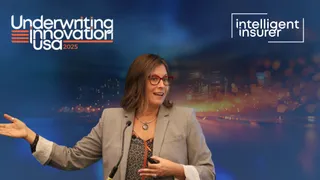
Underwriters must plan now for tariff and trade shock risks
Underwriters are being challenged to think differently about the ripple effects of geopolitics, tariffs and supply chain shocks.
At Intelligent Insurer’s Underwriting Innovation USA 2025 in New York, Brandy Mayfield, CUO at Davies Group, explained that underwriters cannot wait for clarity from Washington or Brussels but must instead equip themselves with the tools and mindsets to adapt portfolios to fast-changing global dynamics.
Talking in a session titled ‘Tariffs, tensions and trade shocks: navigating the geopolitical ripple effect on underwriting’, Mayfield began by reminding the audience that many underwriters now wore multiple hats: pricing leads, risk inspectors, loss control specialists, relationship managers and policy drafters.
“Our corporations are targeting certain profit provisions and certain books of business,” she said. “But when tariffs increase, when technology changes and regulations shift, we need to think differently about risk and not just wait for a new normal.”
She pointed to Europe as an example of insurance markets preparing earlier for change. “Europe is about a decade ahead of the US in insurance innovation. It’s not a knock; it’s a wise wait-and-see approach.”
She mentioned how open banking and open insurance were already reshaping how risk is transacted and geopolitics playing out directly in underwriting books. Mayfield cited the seafood industry’s exposure to sanctions following the war in Ukraine: “One of the largest seafood processors in North America suddenly saw sales drop because Russia was processing and shipping more fish”.
Even with an executive order banning that loophole, US manufacturers were “still feeling the pain”, Mayfield explained. She also referenced Taiwan Semiconductor Manufacturing Company’s Arizona plant delays as a reminder of how tariffs and political tensions rippled across supply chains and are affecting insured exposures.
The local implications, she added, were visible in automotive and housing markets. “Tariffs and supply chain costs mean higher total losses and more salvage. In construction, regulation represents about 25% of costs today.”
Mayfield urged underwriters to mine “diamonds in your own backyard” by scrutinising their books, using simple exercises such as running phone number scans to detect hidden cohorts of buyers, mapping corporate hierarchies to understand supply chain resilience and checking policy language for legacy guarantees.
She highlighted opportunities in cyber, where only a fraction of losses are insured, and new approaches to deductibles, stated values and coinsurance. “For every dollar I spend on liability insurance, I spend $1.07 on uninsured motorist coverage. That tells you where some blind spots lie,” she said.
Mayfield closed with a call for vigilance and creativity. “Don’t read the headlines. Read the details in your articles. Build a tariff discontinuity plan.”
Did you get value from this story? Sign up to our free daily newsletters and get stories like this sent straight to your inbox.
Editor's picks
Editor's picks
More articles
Copyright © intelligentinsurer.com 2024 | Headless Content Management with Blaze

